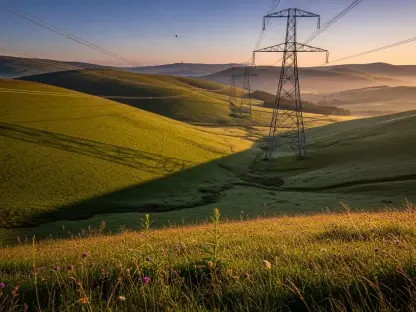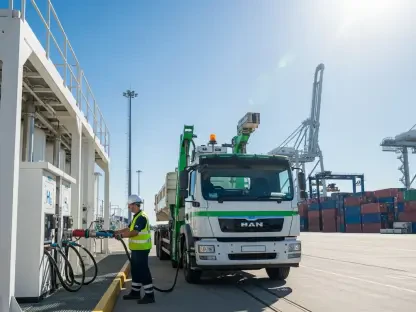What happens when a single forecast can tilt the balance of global energy markets? Picture a world where oil demand surges beyond expectations, supply tightens unexpectedly, and major players scramble to adjust their strategies. This is the scenario unfolding as OPEC unveils its 2026 oil demand projections, painting a picture of a market on the cusp of significant change. With demand forecasts climbing and supply growth outside OPEC+ faltering, the implications for prices, investments, and geopolitical power plays are profound. This isn’t just about numbers—it’s about the future of energy itself.
The importance of this forecast cannot be overstated. Released earlier this year, OPEC’s updated outlook signals a tighter oil market ahead, driven by robust global economic growth and a slowdown in production from key non-OPEC+ regions like the United States. For stakeholders ranging from energy companies to policymakers, these projections are a critical guidepost in a volatile landscape marked by fluctuating prices and geopolitical tensions. Understanding the nuances of this report is essential for grasping how the energy sector might evolve over the next couple of years, particularly as OPEC+ positions itself to capitalize on emerging opportunities.
Why OPEC’s 2026 Outlook Shakes Up Energy Markets
At the heart of this unfolding story lies OPEC’s revised projection for 2026, which raises global oil demand growth by 100,000 barrels per day (bpd) to a striking 1.38 million bpd. This bullish stance, rooted in expectations of steady economic expansion at 3.0% annually through at least next year, contrasts sharply with more cautious estimates from bodies like the International Energy Agency. Key growth drivers include powerhouse economies such as India and China, whose energy appetites show no signs of slowing.
Beyond demand, the supply side reveals an equally compelling narrative. OPEC has cut its forecast for non-OPEC+ supply growth in 2026 by 100,000 bpd, largely due to an anticipated decline in U.S. shale output. Factors like capital discipline and weaker drilling momentum in American shale regions are curbing production, creating a potential gap in the market. This shift could hand OPEC+ a strategic advantage, setting the stage for tighter conditions that might push oil prices upward if economic trends hold.
The broader market dynamics add another layer of intrigue. Brent crude, recently hovering near $66 per barrel after a steep drop earlier, reflects the fragility of current pricing amid these forecasts. For energy markets, this isn’t merely data—it’s a signal of potential upheaval, prompting investors and analysts to reassess positions and strategies in light of a landscape that could favor OPEC+’s influence.
Unpacking the Stakes in a Turbulent Global Economy
OPEC’s projections arrive against a backdrop of economic uncertainty, where oil markets are already navigating choppy waters. Fluctuating prices, compounded by geopolitical tensions and trade disputes centered on U.S. policies, create a complex environment for these forecasts to land. For nations dependent on oil exports or imports, the implications extend beyond energy costs to broader economic stability, influencing everything from inflation to consumer spending.
The global economic outlook, while promising with steady growth projections, isn’t without risks. Trade uncertainties, particularly those tied to U.S. tariffs, could disrupt the demand momentum OPEC anticipates. This tension highlights a critical divergence: while OPEC sees a world still reliant on oil, other industry voices caution against over-optimism, pointing to potential slowdowns in key regions that could dampen energy needs.
For stakeholders, the stakes are high. Energy consumers face the prospect of rising fuel costs if supply tightens as predicted, while exporting nations might see a window to boost revenues. Navigating this volatile terrain requires a keen eye on both OPEC’s numbers and the external forces—economic and political—that could alter the trajectory of these projections.
Diving Deep into OPEC’s 2026 Numbers and Market Shifts
Breaking down the specifics of OPEC’s forecast reveals a multifaceted picture of demand and supply interplay. On the demand front, the upward revision for 2026 reflects confidence in resilient global trade and economic activity, particularly in emerging markets across Asia and Latin America. This optimism stands out as a counterpoint to more conservative views, suggesting that oil’s role in the energy mix remains robust despite pushes for renewables.
Supply constraints, however, paint a contrasting story. The reduced growth forecast for non-OPEC+ producers, now pegged at 630,000 bpd for 2026, underscores challenges in the U.S. shale sector, where output is expected to dip by 100,000 bpd. This downturn, driven by lower oil prices impacting project economics and a focus on efficiency over expansion, could tighten global supply, potentially amplifying OPEC+’s market leverage.
Strategically, OPEC+ is poised to act on these dynamics by ramping up production to reclaim market share after years of cuts aimed at stabilizing prices. Recent data showing a July increase in crude output by 335,000 bpd—though slightly below target—signals intent, even as coordination challenges within the group persist. This push to challenge U.S. shale dominance aligns with a market that might accommodate higher output without triggering a price collapse, provided demand holds strong.
Voices from the Field: What Experts and Data Reveal
Industry insights lend further weight to OPEC’s projections, with analysts highlighting the delicate balance of global growth and market risks. A senior energy economist noted, “Should trade frictions ease and emerging markets maintain their pace, OPEC’s demand forecast might even prove understated.” This perspective suggests that the organization’s optimism isn’t just speculative but grounded in tangible economic indicators.
On the ground, evidence from U.S. shale regions corroborates the supply slowdown. Operators in key areas report squeezed margins due to depressed oil prices, opting for caution over aggressive drilling. This trend, aligning with OPEC’s revised outlook, points to a market tilting toward scarcity—a scenario that could embolden OPEC+’s production strategy while exposing vulnerabilities for American producers.
Geopolitical undercurrents add another dimension, as trade disputes and regional conflicts remain wildcards. Reports from energy hubs indicate growing concern over potential supply disruptions, reinforcing the notion that while OPEC’s numbers are promising for its members, external shocks could still upend the best-laid plans. These real-world snapshots underscore the forecast’s relevance, bridging data with the lived realities of the industry.
Charting a Path Forward: Strategies for a Changing Oil Landscape
For businesses, investors, and policymakers, OPEC’s 2026 outlook offers a roadmap to navigate potential market shifts. Keeping a close watch on oil price trends is paramount, as Brent crude’s recent volatility hints at rapid swings if demand outpaces supply. Tools like futures contracts or diversified energy portfolios can serve as hedges against unexpected spikes.
Exposure to U.S. shale dynamics warrants careful scrutiny. Firms or funds heavily tied to American energy production should prepare for slower growth, possibly diversifying into regions with stronger output potential or exploring renewable alternatives to balance risks. This approach can cushion against the forecasted decline in shale output that might reshape investment priorities.
Tracking OPEC+ policy moves is equally critical, given their intent to boost production. Deviations from targets could sway market balance, affecting everything from fuel costs to inflation rates. Staying informed through monthly reports or industry updates ensures timely adjustments. Additionally, factoring in geopolitical risks—such as trade tensions or supply disruptions—calls for contingency plans, like securing alternative suppliers or building buffer stocks, to mitigate potential shocks.
Reflecting on this pivotal moment, it became clear that OPEC’s 2026 forecast had ignited crucial discussions about the future of global energy markets. The balance of rising demand and constrained supply outside OPEC+ had set a new stage for strategic maneuvering. Looking ahead, stakeholders needed to prioritize agility—monitoring price shifts, diversifying investments, and preparing for geopolitical surprises. The path forward demanded not just reaction but proactive planning to turn uncertainties into opportunities. As the oil landscape continued to evolve, staying ahead of these trends remained the key to navigating the challenges and capitalizing on the possibilities that lay beyond the horizon.









